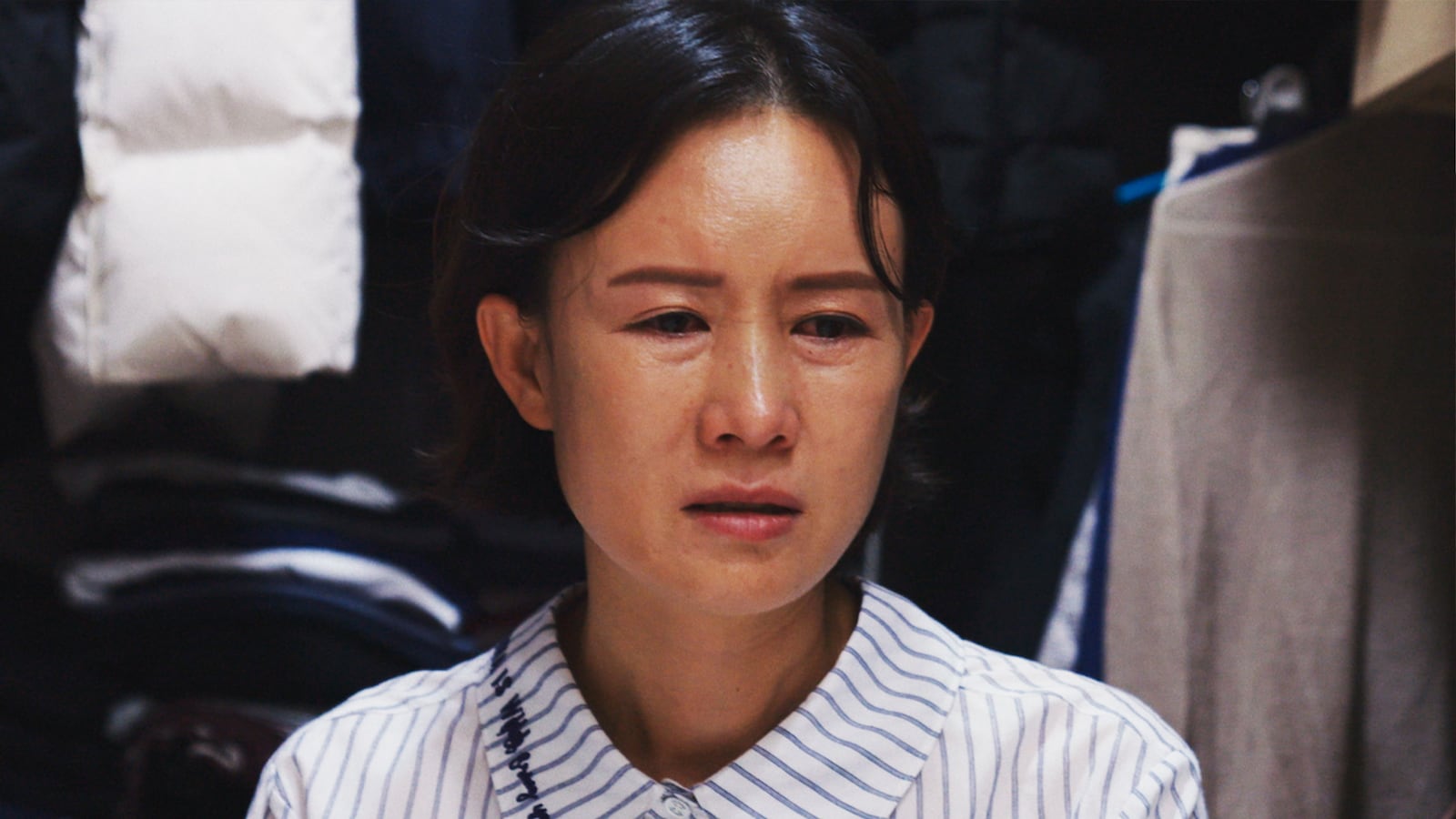After its debut at the 2023 Sundance Film Festival, where it won the Audience Award for U.S. Documentary, Beyond Utopia drew accolades from film critics and viewers for its depiction of two families defecting from North Korea. The glowing reviews continued after Sundance from critics at the New York Times and Washington Post, who lauded the film as a “thriller” where the “horrors are real.”
Then, in late December, Beyond Utopia made the official shortlist for the Oscar for Best Documentary. Though it was ultimately not nominated in that category, as many outlets had predicted, its inroads within the Academy and Hollywood highlight a larger problem with how Westerners stereotypically depict Korea in its documentaries.
Beyond Utopia is part of what has become a “canon” of North Korean defector documentaries, including Seoul Train (2004), Kimjongilia (2009), and The Defector: Escape from North Korea (2012). But instead of adding anything new to these narratives, Beyond Utopia merely continues the trend of sensationalized stories that dehumanize North Korean people to create buzz-worthy content.
It’s undeniable that the defectors’ journeys depicted on screen are harrowing and heartbreaking as they brave possible retaliation by their government. What’s really concerning about Beyond Utopia is not the firsthand narratives, but the context—or lack thereof—with which the filmmakers surround them. Crucially, what the film lacks is discussion of the United States’ unsavory role in creating the harsh conditions inside North Korea that contribute to defectors being forced to flee.
As a historical primer about the divided peninsula, director Madeleine Gavin begins narrating from an inflection point in modern Korean history: the end of the Japanese colonization of Korea, and the lead-up to the Korean War. But Gavin fails to present a balanced analysis of the players who set in motion a brutal war that would lead to the deaths of 2.5 million Korean civilians.
Instead, she only briefly references a vague “settlement deal” that “splits Korea” after WWII, leaving out the U.S. military’s division of Korea at the 38th parallel (when two U.S. generals infamously pointed to a National Geographic map). She then continues to paint a rosy picture of a U.S.-supported burgeoning South Korean democracy, stating that the “South held a public election and U.S.-educated Syngman Rhee became the first president,” omitting the U.S. military occupation that crushed any popular people’s movements, like the Korean People’s Committees, and propped up brutal dictatorships under Presidents Rhee Syngman, Park Chung Hee, and Chun Doo Hwan.
With this historical set-up, the filmmakers position the bifurcated lens through which to view the rest of the documentary: the West as benevolent savior, the North as helpless victim.
These problematic omissions arise throughout the film. The filmmakers characterize North Korea as an economically destitute place where people must search for human waste to use as fertilizer, without acknowledging the role of U.S.-led sanctions that prohibit imports of farming products and equipment. One of the documentary’s main expert sources is a former CIA analyst, Sue Mi Terry, who has argued for the collapse of North Korea and even harsher sanctions on the country, as if it were not home to 26 million civilians who are already food-insecure.
One cannot pretend to care for the protection of the North Korean people while advocating for policies that will add to their suffering. It’s especially ironic that the filmmakers rely on CIA expertise, when the agency has a long history of overthrowing democratically elected foreign governments to serve its own political and business interests.
When Western filmmakers portray historically complex stories like Beyond Utopia, they carry the responsibility of questioning the agendas and propaganda that have been fed to us as U.S. citizens, instead of parroting a standard anti-Communist Cold War ideology. Filmmakers telling stories about Korean history—especially those from outside the Korean diaspora—must critically analyze the powerful forces that create the set of conditions that they are documenting.

Asian American filmmakers have voiced these concerns to Beyond Utopia’s distributor, PBS’ Independent Lens. In an open letter, filmmakers Deann Borshay Liem, J.T. Takagi, and Hye-Jung Park note the film’s lack of “any mention of the ongoing impact of the Korean War and U.S. policies that have destabilized the livelihood and well-being of North Korea’s people—factors that cause families like the Rohs and Lees to leave the country.”
The president of Independent Lens, Lois Vossen, responded with a uniquely disappointing letter from director Gavin. In her response, Gavin stated: “Our film attempts to give voice to North Koreans, people who have been largely unseen and unheard by the outside world for more than 75 years.”
Instead of acknowledging the shortcomings of her film, Gavin went on to defend its limited scope. “Our film does not set out to present a comprehensive history of the Korean War, or the development of the North Korean state,” she wrote. Gavin has also said that her impetus for making Beyond Utopia was the realization that “there was nothing out there that gave voice to these 26 million people that live in North Korea, other than Barbara Demick’s extraordinary book ‘Nothing to Envy.’”
However, as has been written about time and time again, filmmakers, particularly white filmmakers, must engage in serious due diligence before telling the stories of disenfranchised people of color, especially when dealing with the largely untold history of the Korean War, otherwise nicknamed the “Forgotten War.” There are many nuanced documentaries about the war that achieved this by centering the Korean people and the ongoing trauma of division, including Homes Apart: Korea (1991), Memory of Forgotten War (2013), People Are the Sky (2014), and My Brothers and Sisters in the North (2016).
Beyond Utopia, in comparison, falls short. Gavin states that she wishes to give voice to North Koreans, but fails to explain the history of the peninsula’s division and how exactly it became “North” Korean. Media gatekeepers and cultural creatives must tell the full story, including how the U.S. dropped more bombs on Korea than it had on the entire Pacific region during WWII, killing one in five North Korean civilians. The Korean War has been called “the most brutal war of the 20th century, measured by the intensity of violence and per capita civilian death,” by Yale University historian Samuel Moyn. This history is absolutely crucial for understanding the state of the divided Korean peninsula and North Korea today.
The ethics of documentary filmmaking are inevitably complex, and questions about who gets to tell whose stories are far from uncommon. But in Beyond Utopia, a white filmmaker presented a highly fragmented and incomplete version of Korea’s continued division to a Western audience who unfortunately fell head over heels for its flattened narrative.






